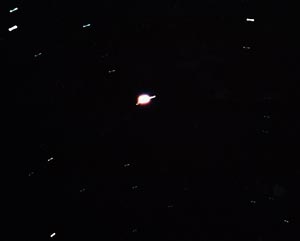The North Star is the name given to the star located near the celestial North Pole, making it the most suitable for maritime navigation in the Northern Hemisphere. To earn this designation, a star must be visible from Earth and close to the northern celestial pole. The most fitting star in recent times is Polaris. It is important not to confuse the North Star with the Big Dipper.
 Historically, explorers, sailors, and those venturing into the wilderness have used the North Star to determine their latitude. From any point north of the equator, the angle from the horizon to the North Star (its altitude) equals the latitude from which the observer measures this angle. For example, the angle to the North Star for someone at a latitude of 30° will be approximately 30°.
Historically, explorers, sailors, and those venturing into the wilderness have used the North Star to determine their latitude. From any point north of the equator, the angle from the horizon to the North Star (its altitude) equals the latitude from which the observer measures this angle. For example, the angle to the North Star for someone at a latitude of 30° will be approximately 30°.
Polaris has an apparent magnitude of 1.97. Historically, around 3000 BC, the dim star Thuban in the constellation Draco was considered the North Star; with an apparent magnitude of 3.67, it is about five times dimmer than Polaris. The bright star Vega in the constellation Lyra will be the North Star around the year 14,000. In comparison, the brightest star, Sirius (or Alpha Canis Majoris), has an apparent magnitude of −1.46 (with the Sun having an apparent magnitude of −26.8).
Currently, there is no Southern Star with benefits similar to Polaris; the dim star σ Octantis is the closest to the southern celestial pole. However, the constellation Crux (also known as the Southern Cross) points directly to the South Pole.


















































